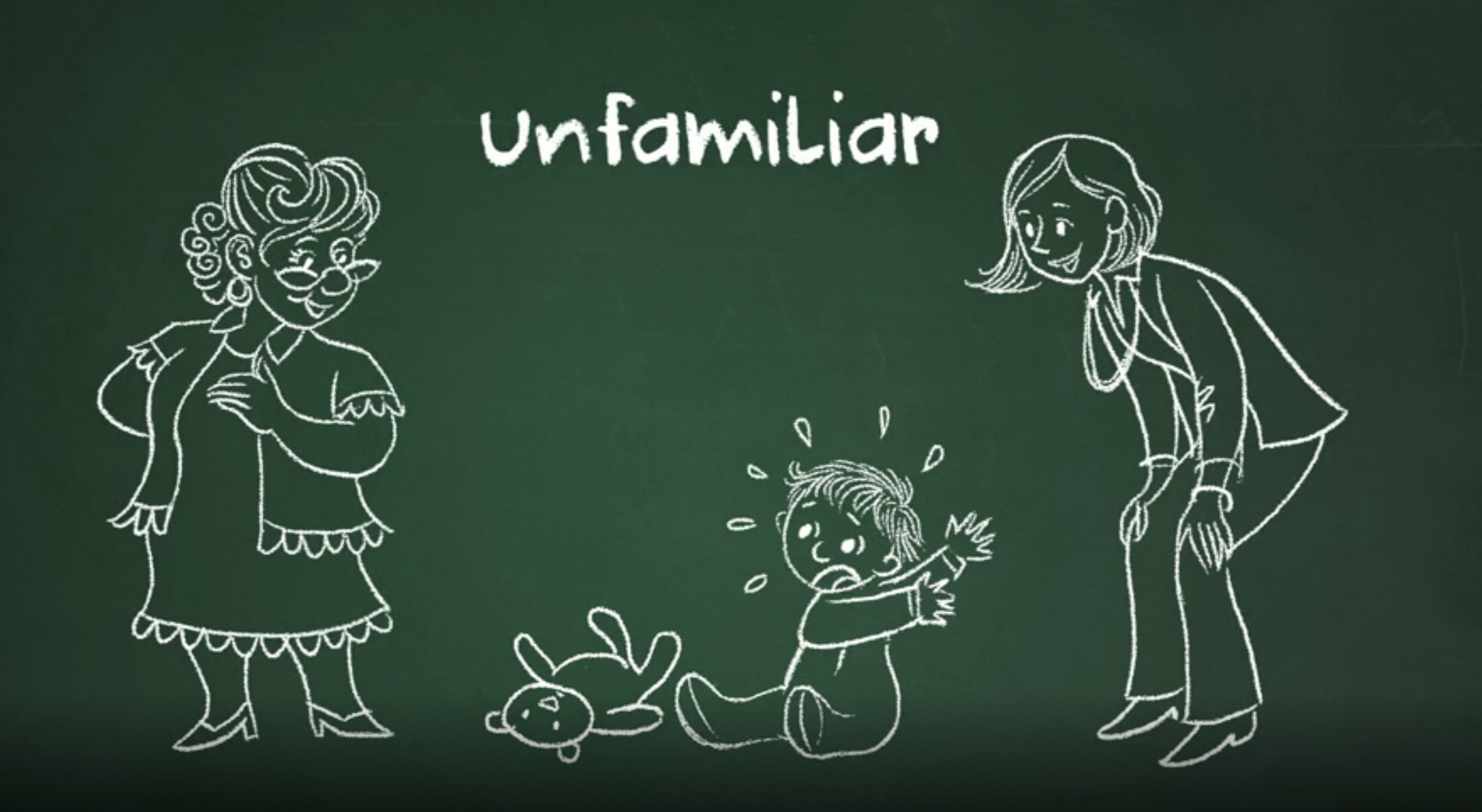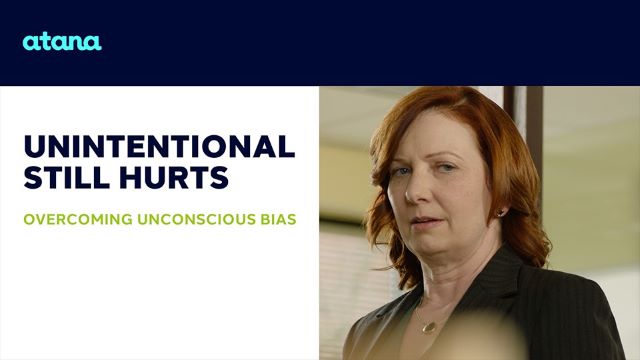
Organizations nationwide face many outside disruptions today—from lingering pandemic effects and shifting work models to evolving artificial intelligence.
But an internal menace also threatens business performance and jeopardizes bottom-line success. That disruptor is workplace bias.
Encounters with bias—whether experienced or witnessed—can take a dangerous toll on employees’ personal well-being and job performance. According to a Deloitte study1, 68% of U.S. employees surveyed said that workplace bias negatively affected their productivity; 70% said it diminished engagement in their work.
64% U.S. employees who felt they'd experienced or witnessed workplace bias during the year. And of those...
61% felt they'd encountered bias at work at least once a month1
What is bias?
Bias itself is not an inherently bad thing. It’s simply a method our brains have developed over time to enable us to quickly classify people as a means of processing information efficiently. Historically, that sorting capability—which occurs based on our past experiences and below our levels of awareness—has helped keep us safe. It leads us to gravitate toward the familiar while tending to avoid the unfamiliar. The clip below illustrates what this familiar/unfamiliar sorting can look like.
How Was Your Day? clip ©2016-2023 Atana
Bias becomes problematic when the conclusions we reach are based on false information or stereotypes. According to Merriam-Webster, “stereotype is most frequently now employed to refer to an often unfair and untrue belief that many people have about all people or things with a particular characteristic.” Those traits might include gender, age, race, ethnicity, or other factors.
In the workplace, bias becomes a problem when it affects our treatment of others, dictates whose opinions we value, or influences the decisions we make.
What is explicit bias?
Explicit bias, which may be positive or negative, describes beliefs, attitudes, or preferences of which we’re consciously aware. These may apply to individuals or groups, companies, products, brands, even places. In the workplace, some examples of explicit bias may include the following:
- racist or sexist comments
- favoring younger employees over older workers for advancement
- wage discrimination that awards male executives higher compensation than their female counterparts
- hiring practices that benefit local talent over candidates from foreign countries
What is implicit bias?
Implicit, or unconscious, bias also reflects the beliefs, attitudes, and perceptions developed through experiences (including the influence of others), but is more insidious because we aren’t aware of it—our positive or negative preferences automatically impact our thoughts and actions. Because implicit bias happens without our realizing it, we may find ourselves making important decisions that are based on unconscious prejudice instead of fact.
- In the workplace, gender, affinity, age, and beauty biases are some of the most commonly encountered examples of implicit bias:
- A hiring manager with an implicit gender bias chooses a male job candidate over an equally qualified female applicant
- An employee with an implicit affinity bias limits her professional network because she prefers to interact with others who work in her own department or share her interests
- A manager with an implicit age bias awards a high-visibility project to a young team member over an older one
An executive with an implicit beauty bias selects a physically attractive employee over a more-qualified but less attractive colleague to represent the organization as a keynote speaker at an elite conference
When considering implicit bias in the workplace, the halo effect is an often-cited term. This type of implicit bias occurs when our overall impressions of an individual (or place, product, etc.) cause us to unconsciously attribute unrelated character traits to them. For example, we learn that a new hire attended an Ivy League school and we assume they are highly intelligent or particularly insightful. Or perhaps a manager repeatedly praises a team member for their data analysis skills and soon begins to perceive the employee as especially competent in all aspects of her work.
How does bias affect the workplace?
Because bias can occur in many ways in the workplace, the discrimination and distress it causes can significantly damage individuals and organizations. For employees who are targets or witnesses of bias, results may range from career damage to emotional upset to job loss and financial fallout.
In addition to negative effects on productivity, bias may cause organizations to suffer harm, too. Some potential problems include:
- Damage to the employer reputation
- Reduced ability to recruit top talent
- Decreased customer satisfaction
- Lower product demand and sales volume
- Reduced revenues
- Legal costs and actions
- Negative effects on company culture
The video example below shows how bias (even when unintentional) can hurt employees and the organization.
Unintentional Still Hurts clip ©2021-2023 Atana
Organizational leaders must take decisive action to avoid the risk that both explicit and implicit bias can pose to business and employee well-being.
What can be done about workplace bias?
It is clear that effective training to identify and address explicit and implicit bias is a critical tool to help organizations address current issues and avoid future risks associated with bias in the workplace.
Because of its blatant nature, explicit bias may be the easier of the two to identify and prevent. Disrespectful or discriminatory speech and actions are illegal in many instances, so organizations often have stated values and rules in place to specify appropriate workplace behavior. Many apply compliance training to support those expectations and educate employees about potential legal concerns.
Implicit biases can be more challenging because they occur unconsciously. That means that awareness and acceptance of our biases and the harm they can cause must be the starting point for effectively addressing implicit bias.
However, behavioral experts warn2 that implicit bias training centered only on awareness often fails, adding that “The most effective unconscious bias training does more than increase awareness of bias and its impact. It teaches attendees to manage their biases, change their behavior, and track their progress.”
From its demonstrated 3x increased acceptance of personal bias by employees who completed training to its powerful, behavior-changing instruction, Atana’s award-winning Unintentional Still Hurts delivers a truly effective learning experience.
For example, the initial training and supplemental follow-up course reinforce key concepts and new behaviors by teaching employees to overcome implicit and explicit bias with the easy-to-apply STEP strategy:
Stop and Think: When making an assumption about a co-worker, ask: Why I am making this assumption? Then, break the pattern by asking: Would I do this if the person wasn’t _____ (female, male, a person of color, etc)?
Explore: Where did this bias come from? Family, culture, past experience?
Prepare: Seek information to overwrite the stereotype. For example, finding yourself thinking that younger workers lack commitment, search for examples of young employees who excel in their jobs and show dedication to their work.
Recommended Training
Unintentional Still Hurts: Overcoming Unconscious Bias is designed in such a way that organizations are able to measure changes in employees’ acceptance of bias and use of the STEP strategy.
See how real change is really measured.
Request a demo of our Atana Insights dashboard.










